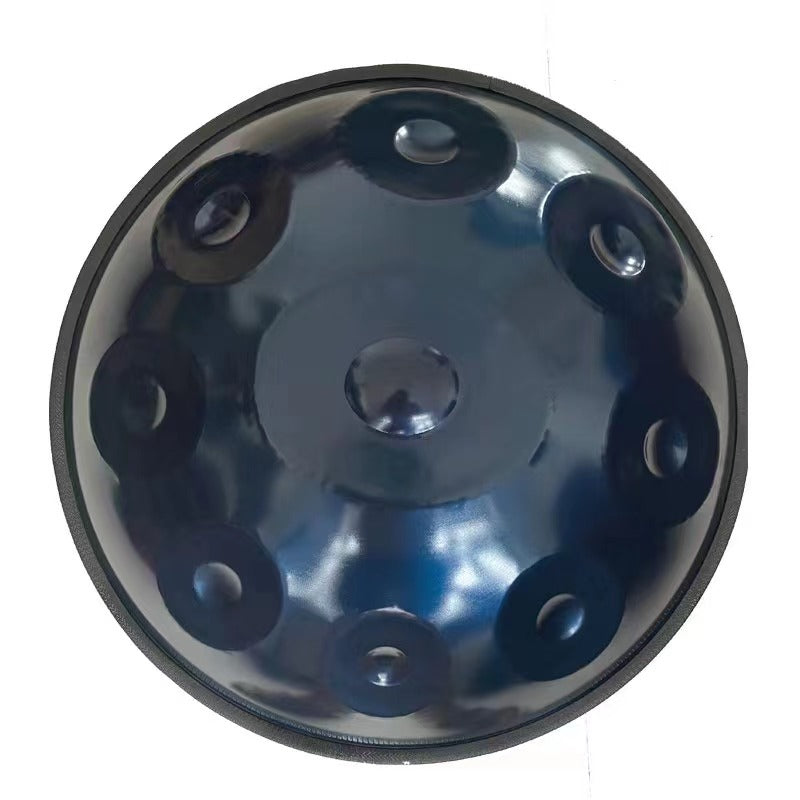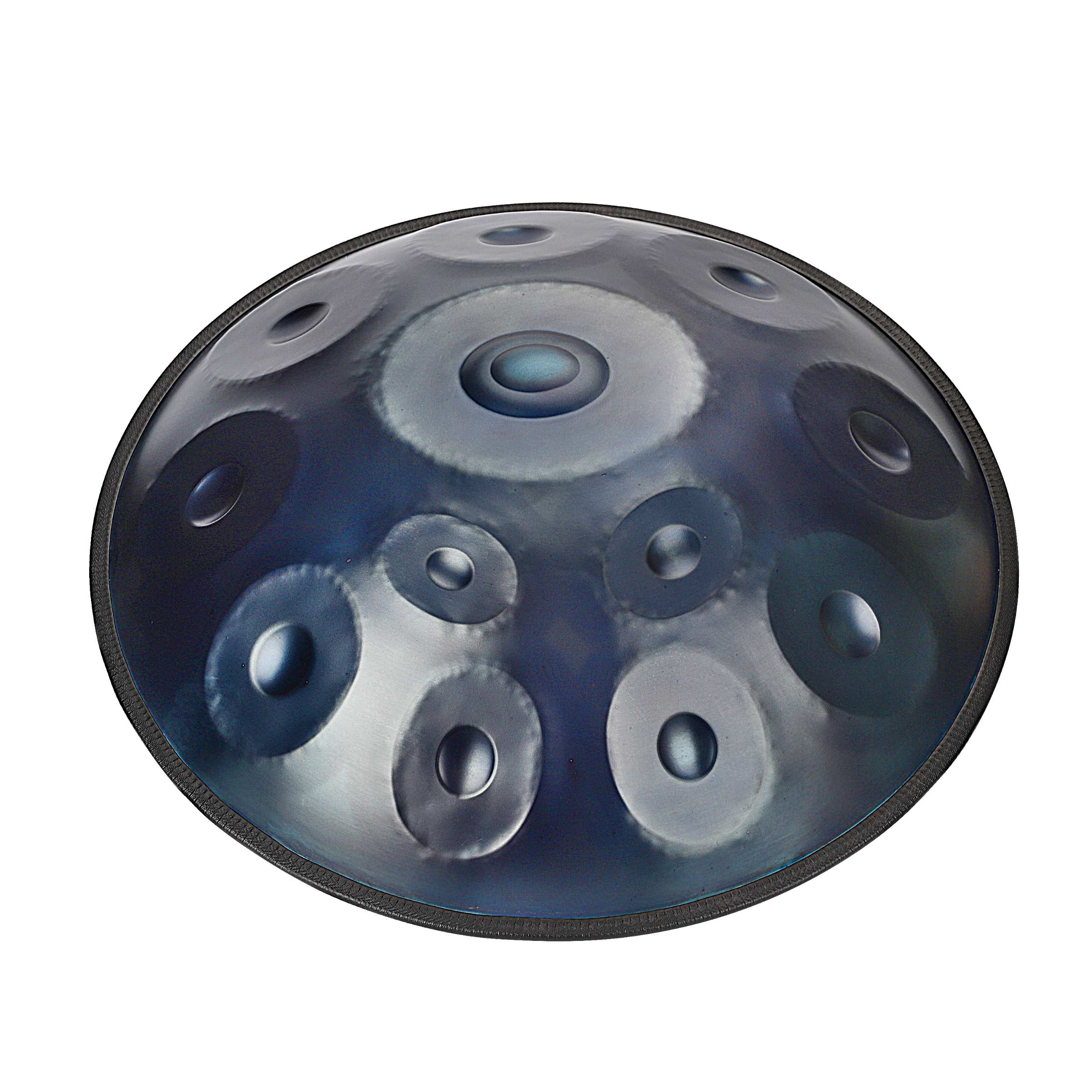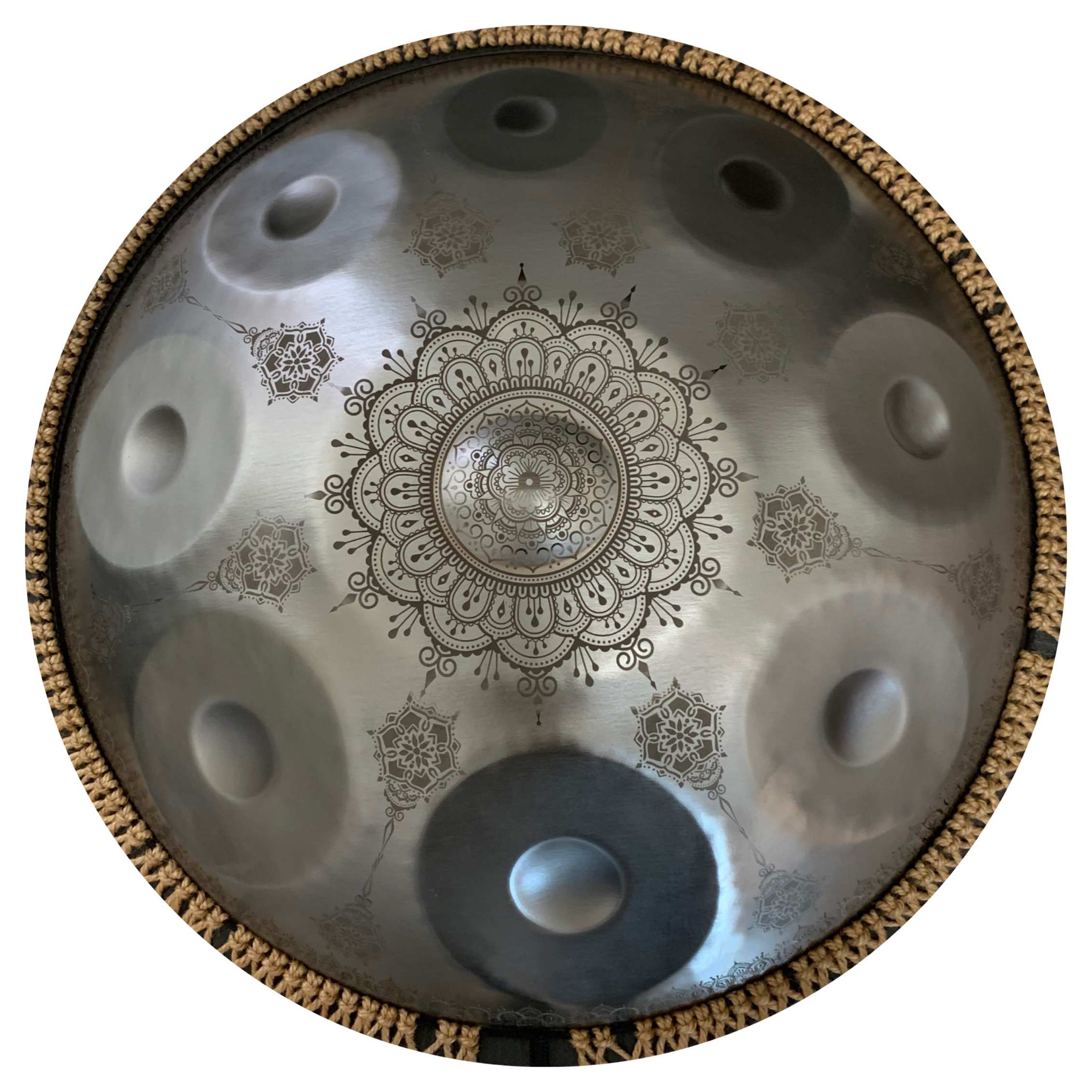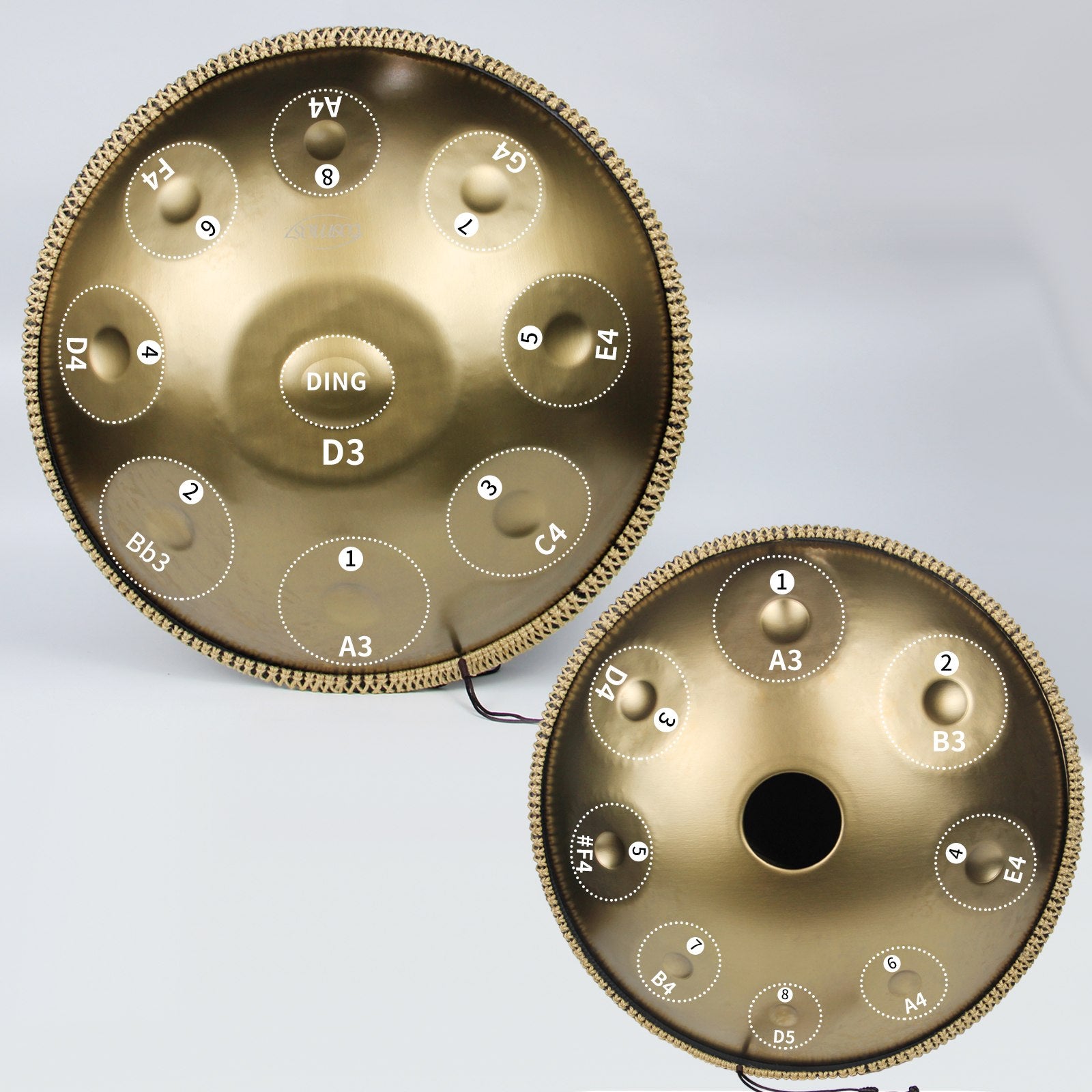General Dimensions:
The standard size of a
handpan is typically around 22 inches (56 centimeters) in diameter. This measurement encompasses the entire instrument, from one side to the other, including the resonant cavity, the note layout, and the outer rim. The 22-inch diameter is a common benchmark, but variations exist, and some handpans may be slightly smaller or larger.
Depth and Height:
The handpan's depth, or height, is an essential dimension that influences its overall tonal quality. Generally, handpans have a depth ranging from 8 to 10 inches (20 to 25 centimeters). This depth contributes to the instrument's resonance and the depth of the notes produced.
Weight:
Handpans are designed to be portable and easy to handle. The weight of a standard handpan typically falls in the range of 10 to 20 pounds (4.5 to 9 kilograms). This weight makes the instrument comfortably portable for musicians, allowing them to transport it easily for performances or practice sessions.
Playing Surface Diameter:
The playing surface, where the individual notes are located, usually has a diameter slightly smaller than the overall size of the handpan. The standard playing surface diameter is around 20 inches (51 centimeters). This dimension determines the spacing and arrangement of the notes, influencing the playability and ergonomics of the instrument.
Number of Notes:
The standard handpan configuration often includes eight to twelve notes arranged in a circular pattern on the playing surface. Each note is carefully tuned to a specific pitch, contributing to the instrument's unique sound. The arrangement and tuning of these notes play a crucial role in defining the handpan's tonal palette.







